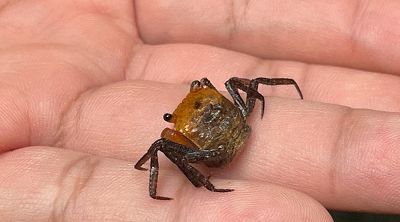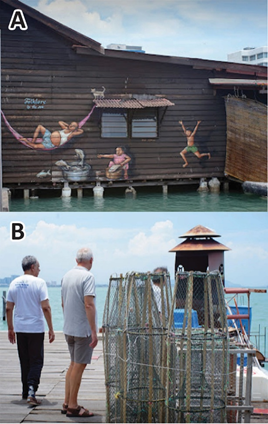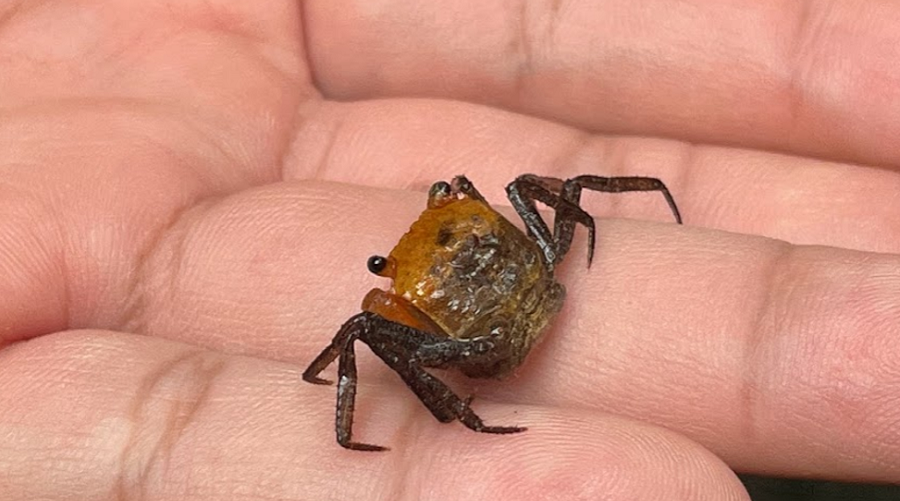By Daniel Pauly
In early September 2022, I found myself on the island of Penang, Malaysia, where WorldFish, an international research center focusing on tropical fish culture, is headquartered. WorldFish is the new name of the International Centre for Living Aquatic Resources Management (ICLARM), previously located in Manila, the Philippines, of which I was a staff member from 1979 to 1994, and a consultant for five more years. The occasion was the annual meeting of the FishBase Consortium, whose members ensure that FishBase and related databases and products remain up to date and relevant to multiple constituencies worldwide.
We were well received by WorldFish, including by its Director-General, and our meeting, a hybrid involving Zoom and in-person participation, was a success, as was the 2-day FishBase Symposium that preceded it (see www.worldfishcenter.org/fishbase-symposium-2022). Here, however, I report only on a few observations I made at the periphery of the formal meetings.
The first is that the tilapia in the large pond-like tank at the center of the WorldFish campus, were all gasping for air and/or the oxygen-enriched water layer at the surface of the pond, whose water was hot and turbid, although seemingly well-aerated. The day before I observed this, I had made a presentation at the FishBase Symposium entitled: “More on the gill-Oxygen Limitation Theory (GOLT),” and here were the fishes of the WorldFish Center gasping for breath…

Figure 1. The Penang Hill vampire crab (Geosesarma faustum Ng, 2017), whose squarish carapace has sides of about 10 mm, live in the water of the cup-like depressions formed by bromeliads and other plants. (Photo by Alex Tilley, WorldFish).
The second observation refers to a minuscule and ill-named Penang Hill vampire crab (Geosesarma faustum Ng, 2017; Figure 1), endemic to one hill, and which finds the water required to complete its life cycle in the small, cup-like water bodies formed by various leafy plants. A tiny crab, high on its own hill, in its own sea of flowers. Awesome.
The third observation was that the fish in the main wet market of George Town, Penang’s capital city, were overwhelmingly silver in coloration (Figure 2A to 2D). There was barely a reddish fish and none of the variegated multicolor fish diversity that one expects from a Southeast Asian fish market. Contrary to the miraculous tiny crab-in-a-flower, this reminded me of the problems with fisheries and their impact on biodiversity.

Figure 2. Some of the grey-silvery fish (and tiger shrimp) in a Penang wet market, Sept. 2022. A: Grey-silvery fish; B: Some faint colors on grey-silvery fish; C: Indian mackerel (Rastrelligr kanagurta), also grey-silvery; D: More silvery fish, with (small) giant tiger prawn (Penaeus monodon) in the background. Photos by Jessica Meeuwig.
The waters around Penang and the Malacca Strait were one of the main areas where a horde of Thai trawlers, later Malaysian trawlers, all subsidized by the Asian Development Bank, were deployed (Martosubroto et al. 1996). Until the trawling began, the shallow sea bottom of the Malacca Strait was covered by a ‘soft coral’ invertebrate community consisting mainly of sponges, some enormous (e.g., Poterion spp.) and its fish community consisted mainly of colorful fish belonging to a multitude of families also occurring on coral reefs.
Trawling eradicated these soft coral communities and transformed the sea floor into a giant mudflat favorable for the growth of shrimps, which thrive in areas where their fish predators are removed. Shrimps were a boon for trawlers (Figure 2), and trawl operators did not complain about the loss of biodiversity that this transition implied.
Small pelagic fishes such as anchovies, Indian mackerels, round scads and other jacks, and their predators, e.g., barracuda, also benefitted from the ecosystem transformation. The sediment resuspension caused by trawling – in addition to injecting previously buried CO2 back into the atmosphere – also injected nutrients into the water column, thereby increasing the plankton production upon which pelagic fish depend.
Where am I going with this? Well, this was needed to explain why the fish in the photos of Figure 2 are all silver-colored and why the entire fish market had very few fish that were not silvery.
We heard from a local fisheries economist that the Malaysian Government is becoming aware that the deployment of trawlers in their EEZ should be somehow limited, mainly because the artisanal fishers suffer from the depredation of trawlers. This is a bit late, as they were informed of this in the 1970s (Munro and Loy 1978).

Figure 3. On a ‘clan jetty’ in Penang, Sept. 10, 2022. A: Joyful mural; B: three tourists at the end of the jetty.
Nevertheless, my fourth observation is one of optimism. There are numerous ‘clan jetties’ in George Town, built by Chinese immigrants in the mid-19th century. The immigrants came from impoverished inland villages. Because they could not buy land in their new country, they became sea-born, i.e., they built their houses on stilts, forming long jetties that grew and where various trades – besides fishing – emerged and thrived (Figure 3). These Chinese immigrants created a world where they could be, and now UNESCO has recognized their ‘clan jetties’ as a heritage site. I think they are an inspiration in a world where immigrants are often seen mainly as people who want to take resources away from or even ‘replace’ the other native inhabitants.
I had more observations, notably about how sad it made me to see 6-year old girls having to hide their hair because these would tempt men, but this is too tricky to write about. Rather, I will note Penang can be enjoyed for its superb food, the bit of jungle it preserved, and the historic architecture of George Town, to be appreciated while avoiding the innumerable cars polluting the air. Penang can also make you think.
References
Ng, P.K.L. (2017). On the identities of the highland vampire crabs, Geosesarma foxi (Kemp, 1918) and G. serenei Ng, 1986, with description of a new phytotelmic species from Penang, Peninsular Malaysia (Crustacea: Decapoda: Brachyura: Sesarmidae). Raffles Bulletin of Zoology. 65: 226-242.
Martosubroto, P., T. Sujastani and D. Pauly 1996. The mid-1970s demersal resources on the Indonesian side of the Malacca Strait. p. 40-46. In: D. Pauly and P. Martosubroto. (eds.) Baseline studies in biodiversity: the fish resources of western Indonesia. ICLARM Studies and Reviews 23.
Munro, G.R. and C.K. Loy 1978. The Economics of Fishing and the Developing World. Universiti Sains Malaysia (2 vol.), Penang.


